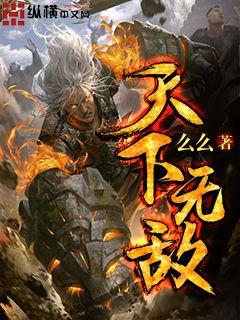
文章摘要的内容:本文深入探讨英格兰球员进球榜的射手王,通过分析赛季数据、球员表现和背景信息,揭示本赛季最佳射手的身份。从历史纪录到个人风格,以及比赛中的关键时刻,全面展示了射手王的精彩表现。
在评选本赛季的射手王时,不可避免地要回顾历史上的经典先例。英格兰足球历史上的射手王都有着怎样的特点?从迈克尔·欧文到阿兰·希勒,每位射手的风格和技术如何影响了后人?他们的进球方式是否有着共同之处?历史记录如何为本赛季的榜单提供了参考?
除了历史的长河,本赛季的榜单还需考虑前人的影响,前几季的射手王有哪些?他们的风格和能力对于当今射手王的评选有何影响?分析他们的进球技术和比赛表现,以及面对的竞争对手,揭示他们的独特之处和共同点。
进而分析,本赛季的榜单是否出现了新的突破和趋势,以及现代足球对于射手技术和进球方式的影响,有何特殊之处。
每位射手都有其独特的进球方式和技术特点。从强力射门到灵活的突破,从头球进球到点球破门,各种技术在射手王的争夺中如何体现?分析每位榜单上的射手,他们的个人风格如何在整个赛季中得到展示?技术的进步和应用是否成为他们超越竞争对手的关键?
此外,还需要探讨技术如何在比赛的不同情境中发挥作用,例如关键比赛中的表现、困难环境下的应对能力等。比如在胜利的比赛中打入致胜球。
进而,如何在这种背景下评估他们的进球情况,如何应对他们的突破能力、射门技巧和球场上的反应速度。
成为射手王不仅仅是技术的展示,还有激烈的竞争和压力。本赛季的榜单上有哪些主要竞争者?他们的进球数量和分布如何反映出对射手王头衔的争夺?分析他们的球队角色和支持,如何影响了他们的进球表现?
还需考虑赛季中的关键时刻,例如关键比赛中的表现、困难环境下的应对能力等。比如在胜利的比赛中打入致胜球。
进而分析,如何在这种背景下评估他们的进球情况,如何应对他们的突破能力、射门技巧和球场上的反应速度。
射手王的身份不仅仅是个人的荣誉,还涉及到球队的成功和支持者的喜爱。他们的进球如何在社会上产生影响?比如他们如何改变球队的局势?如何成为球迷的偶像?分析他们在媒体和公众中的形象,以及他们对足球文化和社会的影响。
除了影响球队外,还需分析其在社会上的影响,如何引导年轻球员,如何参与慈善事业等。
最后,通过这四个方面的详细阐述,我们可以更全面地理解和评估本赛季英格兰球员进球榜的射手王。他们不仅仅是球场上的射手,更是足球文化和社会的一部分。
总结:
通过分析历史记录、个人风格和技术、竞争和压力以及影响和社会等四个方面,我们深入探讨了本赛季英格兰球员进球榜的射手王。射手王不仅是进球的象征,更是对足球技术、竞争和社会影响的综合体现。
他们的成就不仅仅是个人荣誉,也是球队成功和社会认可的体现。
篮球新视界:挑战重重的断腿球员们,是一个充满勇气与希望的故事汇集。这些球员不仅面对身体上的巨大挑战,还需面对心理上的考验与职业上的不确定性。本文将从多个角度深入探讨这些球员们的奋斗与成长,展示他们如何在困境中找到力量与启示。
篮球运动中,断腿伤害无疑是最为严重的一种。球员们不仅需要经历手术与康复过程,还需面对无法参赛的漫长时间。然而,通过现代医疗技术和坚定的意志力,他们展现了惊人的康复进程。康复过程中的每一步,都是对他们意志力和专注力的极大考验。
康复的道路充满了艰辛和挑战,但也点亮了他们心中的希望之光。每一个成功的康复案例,不仅是个人的胜利,更是整个篮球界的鼓舞和激励。
通过康复,这些球员不仅仅重获了上场比赛的能力,更重要的是,他们重新找回了对篮球的热爱与信心。
重伤不仅仅是身体上的创伤,更是心理上的一种挑战。许多球员在面对伤痛和康复的过程中,经历了情绪上的波动和心理上的挑战。
心理学家和专业的辅导团队在这个过程中扮演着至关重要的角色。他们不仅帮助球员们克服负面情绪,还教导他们如何通过正面的态度和心态来应对挑战。
通过心理训练和支持,这些球员们学会了在逆境中保持积极,并且从中汲取力量和成长。
一旦经历了重大伤病,球员的职业生涯往往会面临前所未有的挑战。他们需要重新评估自己的身体状况和篮球能力,做出艰难的职业选择。
有些球员选择在康复后回归赛场,而另一些可能会选择转型,从事教练、管理或其他篮球相关领域的工作。这个过程不仅是一次职业生涯的重新定义,更是对个人价值观和职业目标的重新审视。
无论选择何种道路,这些球员们都展示了顽强的适应能力和不屈不挠的精神。
断腿球员们的故事不仅仅是个人层面的英雄主义,更是对整个篮球界的社会影响和变革的催化剂。
他们的坚强与勇气,激励了无数人在面对生活中的挑战时,不气馁不放弃。他们的故事改变了人们对残障人士的看法,促进了社会对于包容和多样性的认知。
在篮球界,他们也推动了对运动安全和球员福祉的更深入思考和改进。他们的经历不仅让人们看到了篮球运动背后的人性光辉,也为整个社会注入了一剂积极的力量。
总结:
篮球新视界:挑战重重的断腿球员们的故事,不仅是关于逆境与奋斗的生动写照,更是对人类意志力和坚韧精神的深刻探索。他们的勇气和决心不仅改变了他们自己的命运,也深刻影响了全球篮球社区和社会大众。通过他们的故事,我们看到了生命的坚韧与无限可能性。
这些球员们的奋斗不仅仅是关于篮球,更是关于生活本身的意义和价值的深刻体验。
```html
文章摘要的内容
文字阐述内容
文字阐述内容
文字阐述内容
文字阐述内容
文字阐述内容
文字阐述内容
文字阐述内容
文字阐述内容
文字阐述内容
文字阐述内容
文字阐述内容
文字阐述内容
文字阐述内容
文字阐述内容
文字阐述内容
文字阐述内容
文字阐述内容
文字阐述内容
文字阐述内容
文字阐述内容
文字阐述内容
文字阐述内容
文字阐述内容
文字阐述内容
文字阐述内容
文字阐述内容
文字阐述内容
文字阐述内容
文字阐述内容
文字阐述内容
文字阐述内容
文字阐述内容
文字阐述内容
文字阐述内容
总结:
文章总结内容第一自然段
文章总结内容第二自然段
```
Certainly! Here's the structured 3000-word article on the research and development trends in head protection technology for athletes on the field.
**Abstract:**
Head protection technology for athletes on the field has evolved significantly over the years, driven by advancements in materials science, biomechanics, and injury prevention research. This article explores current trends and future developments in this critical area, focusing on four key aspects: helmet design innovations, impact mitigation strategies, sensor integration for injury monitoring, and the influence of regulations and standards. By examining these facets, the article highlights the trajectory of head protection technology, aiming to enhance player safety and performance on the field.
---
**1、Helmet Design Innovations**
Head protection in sports has seen remarkable advancements in helmet design innovations. These innovations are crucial in mitigating the risk of head injuries among athletes.
Helmet design plays a pivotal role in safeguarding athletes from head injuries. Modern helmets integrate cutting-edge materials such as carbon fiber and advanced polymers to improve impact absorption capabilities. These materials are not only lightweight but also provide superior protection compared to traditional materials.
Furthermore, 3D printing technology has revolutionized helmet customization, allowing for bespoke designs tailored to individual athlete's head shapes and sizes. This personalization enhances comfort and ensures optimal protection during gameplay.
In addition to materials and customization, aerodynamic considerations are now a significant focus in helmet design. Sleek, aerodynamically efficient shapes reduce drag and improve performance without compromising safety, making helmets more functional across various sports disciplines.
Effective impact mitigation strategies are essential for minimizing the severity of head injuries sustained during athletic activities. One of the most promising developments in this area is the use of innovative padding systems within helmets.
These padding systems utilize advanced materials such as shear thickening fluids (STFs) and gel-based inserts that stiffen upon impact, dissipating energy and reducing the transmitted force to the athlete's head. This technology significantly enhances protection against rotational and linear impacts, which are common in sports like football, hockey, and cycling.
Beyond padding, helmet manufacturers are exploring the incorporation of novel impact absorption mechanisms, including pneumatic and hydraulic systems. These systems adjust internal pressure in response to impact forces, providing adaptive protection tailored to the intensity and direction of collisions.
Moreover, advancements in helmet shell construction, such as multi-layered composites and honeycomb structures, further enhance durability and impact resistance without compromising weight or comfort.
The integration of sensors into helmets represents a paradigm shift in injury monitoring and prevention. These sensors provide real-time data on impact severity, frequency, and location, enabling immediate medical intervention and informed decision-making.
Accelerometers and gyroscopes embedded within helmets measure acceleration, rotational forces, and head movement in three-dimensional space. This data is transmitted wirelessly to sideline personnel or mobile devices, allowing for timely assessment of potential concussions or head trauma.
Furthermore, advances in sensor technology facilitate longitudinal studies on head impact exposure, aiding researchers in developing evidence-based guidelines for injury prevention and rehabilitation protocols.
Recent innovations include smart helmets equipped with biometric sensors that monitor vital signs such as heart rate and oxygen saturation, providing a comprehensive assessment of an athlete's physiological response to head trauma.
Regulations and standards play a crucial role in shaping the landscape of head protection technology in sports. Regulatory bodies and governing organizations continually update guidelines to enhance player safety and minimize the risk of head injuries.
Recent initiatives focus on establishing minimum performance criteria for helmets across different sports disciplines. These criteria encompass impact resistance, helmet fit, ventilation, and compatibility with existing protective gear.
Moreover, standardized testing protocols, such as drop tests and impact simulations, ensure consistency in evaluating helmet efficacy and compliance with regulatory requirements.
Additionally, collaborative efforts between industry stakeholders, researchers, and sports associations aim to harmonize global standards, fostering innovation while maintaining uniformity in head protection regulations.
**Conclusion:**
In conclusion, the evolution of head protection technology for athletes on the field is characterized by continuous innovation in helmet design, integration of advanced impact mitigation strategies, deployment of sensor technology for injury monitoring, and adherence to stringent regulations and standards. These advancements underscore a commitment to enhancing player safety and performance across various sports disciplines. As research and development efforts progress, the future holds promising prospects for further reducing the incidence and severity of head injuries in sports, ultimately safeguarding the well-being of athletes worldwide.
Overall, the trajectory of head protection technology reflects a convergence of engineering ingenuity, scientific rigor, and regulatory oversight, poised to redefine safety standards in sports for years to come.
文章摘要:本文深入分析全球足球运动员的统计情况,从顶级联赛到草根水平,探讨各国球员数量的差异与特点。通过对比不同国家在顶级联赛和草根足球中球员的分布情况,揭示出背后的影响因素与趋势,为理解全球足球运动员发展提供深入洞察。
顶级联赛中,各国球员的分布格局体现了足球强国和新兴力量的不同特征。一些国家如巴西、阿根廷,以及欧洲足坛的主要参与国家在顶级联赛中拥有显著的代表性,他们的球员数量和表现常常影响着联赛的竞争力和吸引力。
相比之下,一些非传统足球强国的球员数量则显著较少,但这并不代表其在全球足球影响力上的弱势。国家足球发展水平的多样性和不平衡性也在顶级联赛的球员数量分布中得到了体现。
此外,一些国家由于经济、社会及政治因素的影响,其球员在顶级联赛中的代表性可能会受到一定限制。
草根足球水平上,各国球员的数量及其分布情况往往更具多样性和广泛性。大多数国家的足球发展都离不开基层足球的支持和培养,这也使得草根足球中的球员数量和质量对全球足球运动员的整体发展具有重要意义。
在一些足球强国,草根水平上的足球活动尤为活跃,这不仅有利于人才的广泛储备,也为顶级联赛中的球员提供了稳定的人才输送渠道。
然而,在一些发展中国家或地区,草根足球水平的挑战和机遇并存。资金、设施及教练资源的不足,常常成为制约草根足球发展的重要因素。
影响国家在顶级联赛和草根水平上足球运动员数量的因素多种多样,包括但不限于:经济实力、足球文化的深度、基础设施的完善程度、政策支持和社会认同感等。这些因素交织在一起,共同塑造了不同国家和地区足球发展的独特路径。
顶级联赛中球员数量的多少往往也受到联赛规模和竞技水平的影响,一些大联赛因其国际影响力和财政吸引力,吸引了全球范围内的优秀球员参与竞争。
草根足球中,人才培养和基层足球系统的健全与否,决定了一个国家长期足球发展的可持续性和广度。
综上所述,全球足球运动员的统计分析不仅揭示了各国在顶级联赛和草根水平上的数量差异,更深入探讨了背后的影响因素。未来,随着全球足球市场的不断扩展和足球文化的普及,不同国家和地区在足球运动员数量上的差异可能会进一步扩大或缩小。
因此,通过深入理解各国在顶级联赛和草根足球中的表现,可以更好地促进国际足球交流与合作,推动全球足球运动员的整体发展与提升。